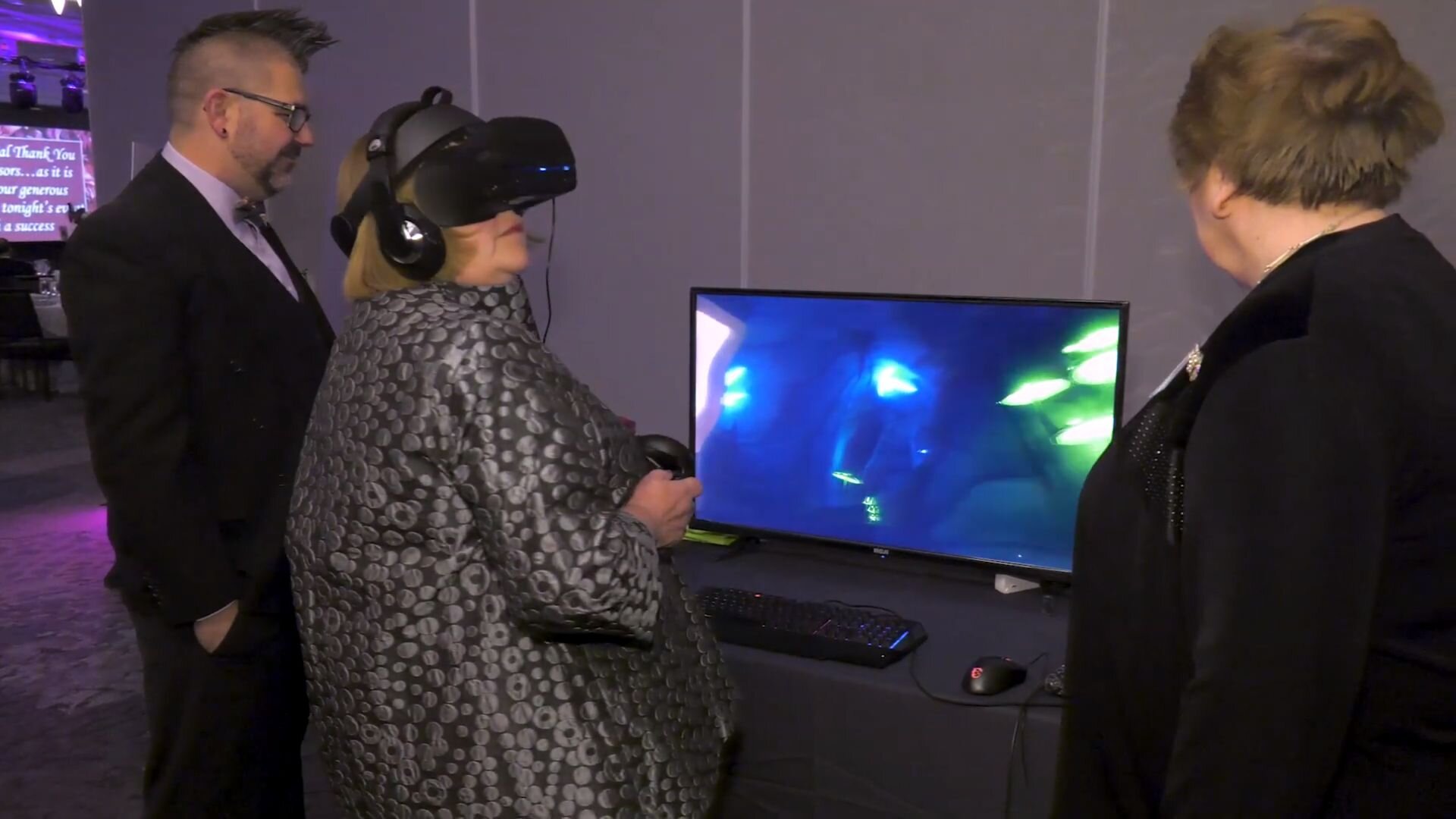Interactive Vision Loss Simulator
Project Name: Through the Looking Glass
Client: University of Alberta | Eye Institute of Alberta
Project Overview:
The client was interested in using new technology to draw awareness to the main vision loss diseases for a major fundraising event. The guests of this event were to experience a fun and realistic experience that simulates the effects of diseases like macular degeneration, glaucoma and cataracts to endear them to the fundraising goals.
Devices:
Oculus Rift S
Challenges and Solutions:
Challenge #1: Simulating realistic eye disease effects
Things like peripheral vision, blurriness and central vision loss without eye tracking technology proved a challenging task.
Solution:
Our technical team collaborated closely with eye disease subject matter experts to create effects that were as realistic as possible.
The effects were also technically challenging to pull off and required custom shader development and particle systems to achieve.
Challenge #2: Designing an idea to deliver this content in a fun way
We were challenged to present this medical content in a fun and engaging way for experts and laypeople.
Solution:
Our design went through several iterations but landed on an “Alice and Wonderland” theme that went well with the visual disturbances
experienced by people with these diseases.
Our storyboarding and design went through much iteration.
Results & Impact:
The end result was a 10 minute VR experience viewable on the Rift S. For the client’s event, we managed five gaming computers
with headsets and had over 60 important medical experts and donors view the experience over the course of several hours.
Following the initial debut, the experience was used by medical students at the U of A, and was licensed by Carlton University
as an instructional tool for students studying eye diseases.





